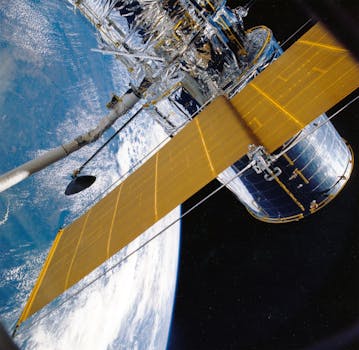GEO Satellites: Understanding the Technology and Applications
GEO satellites, or Geostationary Earth Orbit satellites, are a type of satellite that orbits the Earth at an altitude of approximately 36,000 kilometers, remaining stationary relative to a fixed point on the Earth’s surface. This unique characteristic enables GEO satellites to provide continuous coverage of a specific region, making them ideal for a wide range of applications, including telecommunications, weather forecasting, and Earth observation.
The concept of GEO satellites was first proposed by science fiction writer Arthur C. Clarke in 1945, and the first GEO satellite, Syncom 2, was launched in 1963. Since then, hundreds of GEO satellites have been launched, providing global coverage and enabling modern telecommunications as we know it today. GEO satellites are used for a variety of purposes, including television broadcasting, telecommunications, and data transmission.
How GEO Satellites Work
GEO satellites work by transmitting and receiving signals to and from Earth stations, which are located on the ground. The signals are transmitted through a large antenna on the satellite, which is pointed towards the Earth. The signals are then received by a smaller antenna on the Earth station, which decodes the signal and transmits it to its final destination. GEO satellites use a variety of frequencies, including C-band, Ku-band, and Ka-band, to transmit and receive signals.
The signals transmitted by GEO satellites are amplified by a device called a transponder, which is located on the satellite. The transponder amplifies the signal and re-transmits it back to Earth, allowing the signal to be received by multiple Earth stations. This enables GEO satellites to provide global coverage, as the signal can be received by Earth stations located anywhere within the satellite’s footprint.
Applications of GEO Satellites
GEO satellites have a wide range of applications, including telecommunications, weather forecasting, and Earth observation. In telecommunications, GEO satellites are used to provide voice, data, and internet services to remote and underserved areas. They are also used for television broadcasting, providing global coverage and enabling international broadcasting.
In weather forecasting, GEO satellites are used to monitor weather patterns and provide early warnings for severe weather events. They are equipped with specialized instruments, such as infrared and visible light sensors, which enable them to detect changes in the Earth’s atmosphere and track weather patterns. GEO satellites are also used for Earth observation, providing high-resolution images of the Earth’s surface and enabling scientists to study the environment and track changes in the climate.
Future of GEO Satellites
The future of GEO satellites is promising, with advancements in technology enabling the development of more efficient and capable satellites. The use of high-throughput satellites (HTS) is becoming increasingly popular, as they provide higher bandwidth and faster data rates than traditional GEO satellites. HTS are also more efficient, requiring less power and having a longer lifespan than traditional GEO satellites.
In addition, the development of new launch technologies, such as reusable rockets, is reducing the cost of launching GEO satellites into orbit. This is enabling more companies to launch their own satellites, increasing competition and driving innovation in the industry. As the demand for telecommunications and data services continues to grow, the role of GEO satellites will become even more important, enabling global coverage and providing a wide range of applications.
